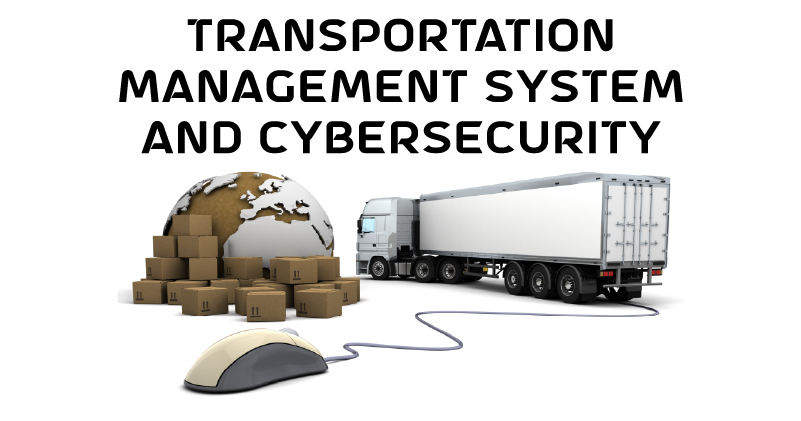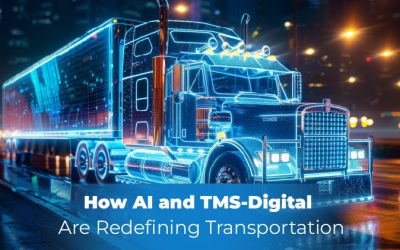
The transportation industry has seen significant advancements in adopting Transportation Management Systems (TMS). TMS allows businesses to manage and optimize their transportation operations efficiently, resulting in cost savings and improved customer satisfaction. However, increasing reliance on technology creates a greater risk of cyber threats. Cybersecurity is critical in protecting TMS data and ensuring safe and secure transportation operations.
In this blog post, we will explore the importance of TMS cybersecurity, common threats to TMS, and the benefits of effective TMS cybersecurity. By understanding the connection between TMS and cybersecurity and implementing the appropriate measures, businesses can protect their operations and customers from cyber threats.
TMS and Cybersecurity: A Critical Connection
The connection between TMS and cybersecurity is critical in ensuring safe and secure transportation operations. TMS relies heavily on data to manage and optimize transportation operations, from tracking shipments to managing inventory and scheduling deliveries. This data is vulnerable to cyber threats, such as hacking, malware, and phishing attacks, which can compromise the integrity of TMS data and operations.
In addition, TMS can also be used to control physical systems, such as automated warehouses and delivery vehicles, which presents a potential risk for cyber-attacks that could damage property, injury to employees, or even loss of life. Therefore, securing TMS data and systems against cyber threats is crucial to protect employees’ and customers’ operations and safety.
Effective TMS cybersecurity involves implementing security policies and procedures, encrypting data, restricting access controls, regularly updating and maintaining software, and training employees on cybersecurity best practices. By doing so, businesses can reduce the risk of cyber-attacks and minimize the potential impact on their operations.
In summary, TMS and cybersecurity are critically connected. As businesses increasingly rely on technology to manage transportation operations, ensuring that TMS data and systems are secure from cyber threats is essential to maintain safe and efficient operations.
Common Cybersecurity Threats to TMS
Several common cybersecurity threats can compromise the security of TMS. These include:
Hacking: This is when an unauthorized person gains access to TMS data by exploiting vulnerabilities in the system. Hackers can steal sensitive data or inject malicious code into the system, causing damage or disrupting operations.
Malware: Malware is software designed to cause harm to TMS data and systems. Malware can be in the form of viruses, worms, or Trojan horses and can be spread through email attachments, infected websites, or other means.
Phishing: A phishing attack is when an attacker tries to trick a TMS user into revealing sensitive information, such as login credentials or financial information, by sending a fraudulent email or message.
Ransomware: This type of malware encrypts TMS data and demands a ransom payment in exchange for the decryption key. If the ransom is unpaid, the attacker threatens to delete or publish the data online.
Denial of Service (DoS) Attacks: A DoS attack is when an attacker floods the TMS system with traffic or requests, overwhelming the system and causing it to crash or become unavailable.
These cyber-threats can compromise the integrity of TMS data and operations, resulting in financial losses, reputational damage, and disruption of business operations. It is essential to implement cybersecurity measures to protect against these threats and ensure the safety and efficiency of transportation operations.
 How TMS-Digital Ensures Cybersecurity
How TMS-Digital Ensures Cybersecurity
The top cloud TMS providers offer the following cybersecurity protection measures. Let’s take TMS-Digital for example:
Data protection: Regularly completing backups of all data, documents, and essential assets, replicating copies over a high-speed, secure circuit to a specific disaster recovery data center. Afterward, backups are kept on protected, encrypted media. Client data is kept on servers that employ cutting-edge technology and methods to minimize failure points and data loss.
Software updates: TMS-Digital routinely applies the most recent security patches to its software infrastructure, and each user should do the same on their network.
Application security: Our IT systems and applications use secure code created and deployed by us. To stop even complex assaults, procedures like prepared statements, SQL injection, and cross-site scripting are used. To find any vulnerabilities, static and dynamic scans of the code base and apps are carried out. When vulnerabilities are found, they are given priority and fixed as part of patch releases or planned for inclusion in subsequent product releases.
Continuous Operational Management: TMS-Digital engineers continuously assess new security risks and install updated countermeasures to stop unwanted access or unanticipated service outages. Systems are set up only to offer the necessities and expressly forbid or restrict the usage of unnecessary features, ports, protocols, and services for the information system’s intended business function. Servers are installed behind several border security mechanisms (firewall, IPS/IDS), and direct connection to the internet is not permitted. An incident detection monitors our environment, and response system to ensure proactive detection and reaction to threats, intrusions, and attacks around the clock.
Physical Security and on-site safeguards: Unlike most TMS service providers, TMS-Digital complies with SOC 1 and SOC 2 standards. We passed a Type 2 SOC 2 assessment and received the highest Service Organization Controls (SOC) classification. All servers and systems are physically protected at Tier III accredited data centers. The facilities are ITAR and EU-US Privacy Shield registered, and they undergo annual SSAE 18 Type 2 SOC 2, PCI-DSS, GLBA, and HIPAA audits.
Conclusion
In conclusion, the connection between TMS and cybersecurity is critical in ensuring safe and efficient transportation operations. TMS relies heavily on data, vulnerable to cyber threats such as hacking, malware, phishing attacks, ransomware, and DoS attacks. These threats can compromise the integrity of TMS data and operations, leading to financial losses, reputational damage, and disruption of business operations.
To mitigate these risks, businesses must prioritize TMS cybersecurity by implementing security policies and procedures, encrypting data, restricting access controls, regularly updating and maintaining software, and training employees on cybersecurity best practices. Compliance with regulatory requirements and industry standards is crucial in protecting TMS data and operations.
As you can see, TMS-Digital and many other leading TMS providers prioritize cybersecurity while acknowledging the necessity for security and preserving their clients’ and partners’ sensitive data. Risks are always present, but if you use a cloud-based TMS, your freight and logistics operations can access the provider’s ongoing security. Contact us today to learn how we can help streamline and secure your business.









